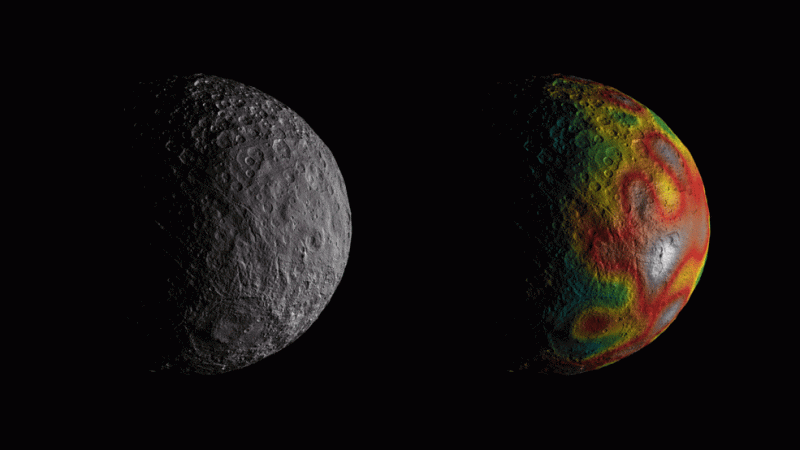
NASA' Dawn mission has helped in detecting proof about residual liquid on dwarf planet Ceres. The leftover liquid belongs to the ancient global ocean that existed on the planet.
The crust of the dwarf planet comprises ice, salts and materials belonging to geological activities which took place in the past.
The layer beneath the rigid surface of Ceres is found to be easily deformable and soft due to the residual liquid.
"More and more, we are learning that Ceres is a complex, dynamic world that may have hosted a lot of liquid water in the past, and may still have some underground," said Julie Castillo-Rogez, Dawn project scientist based at NASA's Jet Propulsion Laboratory (JPL) in California.
ALSO READ: Marijuana can boost your sexual performance: Study
A group of astronomers led by Anton Ermakov, a postdoctoral researcher at JPL, had used the measurements of shape and gravity to determine the composition and internal structure of Ceres. The finding reveals that this dwarf planet is geologically active or was in the recent past.
Three craters named Occator, Kerwan and Yalode and a solitary tall mountain present n the crater, Ahuna Mons, are linked with "gravity anomalies".
"Ceres has an abundance of gravity anomalies associated with outstanding geologic features," Ermakov said. In the cases of Ahuna Mons and Occator, the anomalies can be used to better understand the origin of these features, which are believed to be different expressions of cryovolcanism.
ALSO READ: Interstellar celestial body spotted in our solar system for the first time!

The models of Ceres created by the scientists show discrepancies. The analysis of these four locations done by the Dawn probe is about the subsurface structures.
Astronomers led by Roger Fu at Harvard University, US, studied the composition and strength of the dwarf planet's crust and deeper interior by analysing its topography. The researchers found that the crust of the dwarf planet comprised ice, salts, rock and an additional component, which was believed to be clathrate hydrate — which is a cage of water molecules, surrounding a gas molecule.
ALSO READ: 'Fish-lizard' fossil belonging to Jurassic era discovered in Gujarat's Kutch district
Clathrate hydrate's structure is found to be 100 to 1,000 times stronger than water ice, while having almost the same density.
It's believed by the researchers that the surface features of Ceres were more well-defined once, but they have smoothened over time. A very strong crust resting on a more deformable layer which contains a small amount of liquid is required for this sort of flattening of mountains and valleys, according to Fu and his team of astronomers.

















